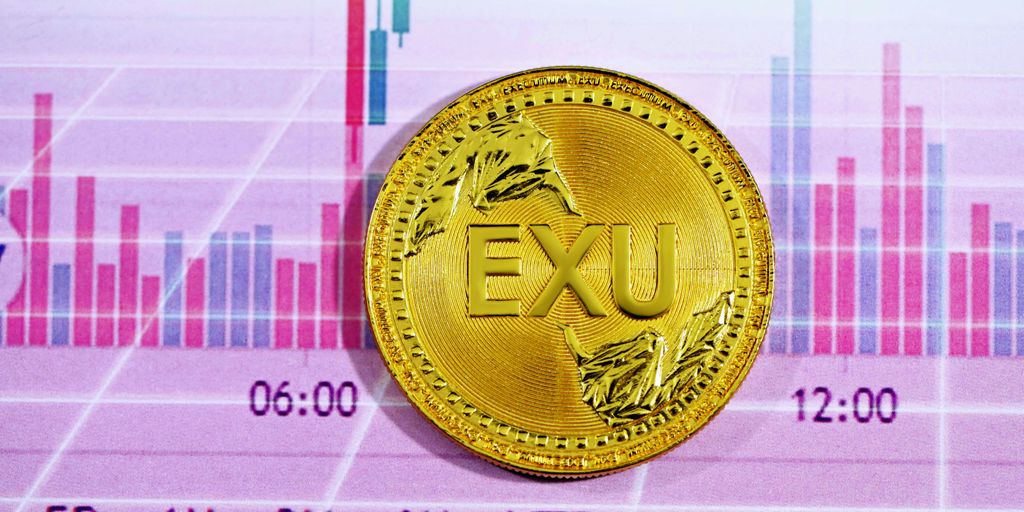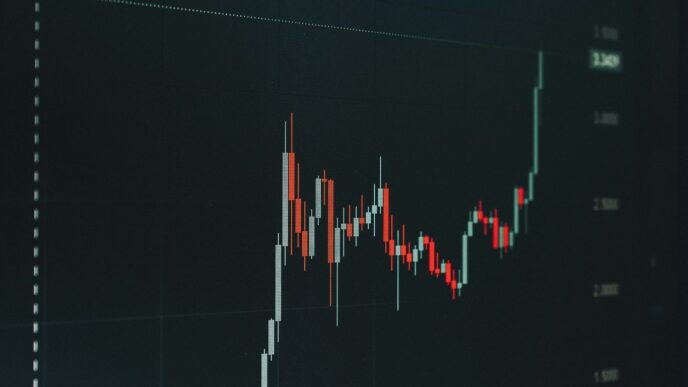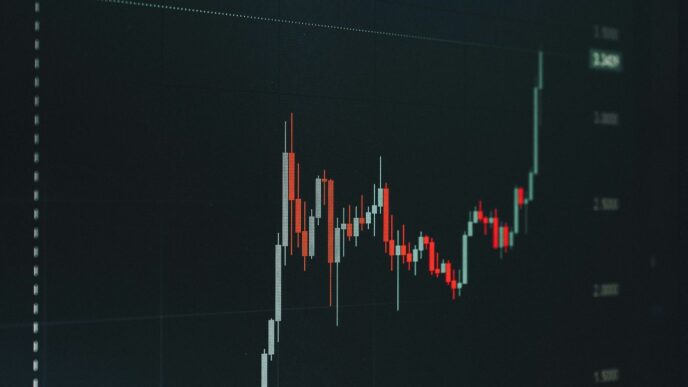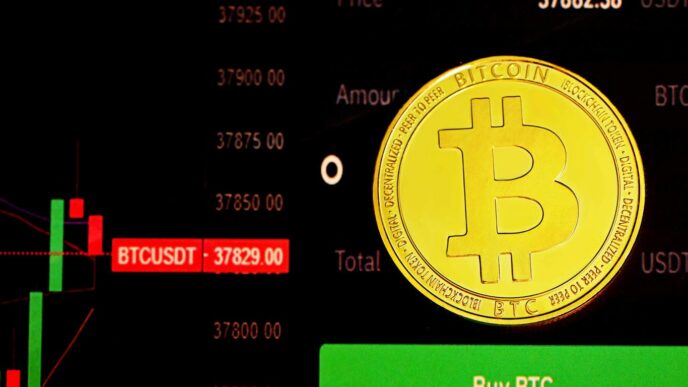Crypto markets can be exciting, but they also come with big ups and downs. We’ve seen prices shoot up and then crash down pretty fast. It’s easy to get caught up in the hype, but understanding how these crypto bubbles form and what signs to look for is super important if you want to protect your money. This article breaks down what you need to know about crypto bubbles, looking at past events and giving you some ideas on how to handle the wild ride.
Key Takeaways
- Crypto bubbles happen when prices jump way higher than an asset’s real worth, mostly due to hype and speculation, not actual value.
- Past events like the 2017 Bitcoin surge and the ICO craze show how quickly crypto prices can inflate and then collapse.
- Warning signs of a crypto bubble include super-fast price increases without real growth, tons of media buzz, too much borrowing to trade, and a flood of new, unproven projects.
- It’s impossible to perfectly time market peaks, so smart strategies include using stop-loss orders to limit losses and diversifying your investments across different assets.
- Taking profits gradually as prices rise, instead of trying to sell at the exact top, is a good way to secure gains before a potential crash.
Understanding the Anatomy of Crypto Bubbles

Defining a Crypto Bubble: Hype Versus Value
So, what exactly is a crypto bubble? Think of it like a party that gets way too wild. Prices for digital coins start shooting up, not because the coin itself is suddenly way more useful or valuable, but because everyone thinks it is. It’s driven by excitement, a bit of FOMO (fear of missing out), and the general belief that prices will just keep climbing. This is where hype really takes over. People buy in because they see others making money and want a piece of the action, often without really understanding what they’re buying. Eventually, this enthusiasm fades, reality hits, and the prices crash, sometimes dramatically. It’s a cycle where speculation outpaces any real technological advancement or practical use.
The Role of Market Sentiment in Price Inflation
Market sentiment is a huge player in how crypto prices move, especially when it comes to bubbles. While cryptocurrencies have some genuinely cool tech behind them, their prices don’t always reflect that long-term potential. Instead, investors can get caught up in the general mood of the market. If everyone’s feeling optimistic and talking about massive gains, prices tend to go up. But this optimism can be fragile. When doubts creep in, or if there’s some bad news, that same sentiment can flip, causing prices to drop just as fast. It’s important to try and separate the actual worth or use of a digital asset from the general feeling about it at any given moment. You can check out some analytics tools to get a better feel for market trends, like those offered by HelpTheCrowd.com.
Recognizing Early Indicators of Speculative Frenzy
Spotting a bubble before it bursts is tricky, but there are definitely signs to watch for. One of the most obvious is when a cryptocurrency’s price skyrockets without any real improvement in its underlying technology or practical use. If a coin doubles in value but there haven’t been any major updates or new partnerships, that’s a red flag. It suggests the price jump is mostly due to people speculating, not because the asset itself has become more valuable. Beyond just price, keep an eye on the media and social media. If a particular coin is getting tons of attention, with influencers and news outlets constantly talking about it, that’s often a sign of hype building. This intense buzz can create a
Historical Parallels: Lessons from Past Crypto Bubbles
Looking back at crypto’s history is super helpful if you want to avoid getting burned by the next big boom and bust. It’s like learning from someone else’s mistakes, right? We’ve seen some wild rides that can teach us a lot about how these markets behave.
The Bitcoin Surge and Subsequent 2018 Correction
Remember 2017? Bitcoin went from about $1,000 at the start of the year to almost $20,000 by December. It was insane. Everyone was talking about it, and new people were jumping in daily, convinced it would just keep going up. This was fueled by a lot of hype and the classic FOMO – fear of missing out. But then, reality hit. Early 2018 saw a massive crash, with Bitcoin dropping all the way back down to around $3,000 by the end of that year. This rapid rise and fall showed just how speculative the market could be, with many latecomers taking big losses. It’s a stark reminder that prices don’t always reflect actual value or use cases.
The ICO Craze: Billions Raised on Promises
Then there was the Initial Coin Offering (ICO) boom, mostly around 2017 and 2018. Projects were popping up everywhere, promising to revolutionize industries with blockchain technology. They raised billions of dollars, often with little more than a whitepaper and a dream. Many of these ICOs were outright scams, while others simply failed to deliver on their ambitious goals. When the market corrected, most of these tokens became worthless, leaving investors with nothing. It was a gold rush, but for many, it ended in disappointment.
Analyzing the 2017 Meme Coin Phenomenon
While not as prominent as Bitcoin’s surge, the rise of meme coins in 2017 also offers lessons. These coins, often created as a joke or based on internet memes, saw incredible price spikes driven purely by social media trends and community hype. Their value had absolutely no connection to any underlying technology or utility. While some early investors made quick profits, the vast majority lost money when the hype inevitably died down. It highlights how easily sentiment can detach from any semblance of real-world value, a pattern we’ve seen repeat with newer meme coins. It’s a good example of how quickly things can get out of hand when speculation takes over, and it’s worth remembering as we look at current trends, like the advancements in space tourism with companies like Virgin Galactic unveiling new spaceship.
Identifying the Warning Signs of Emerging Crypto Bubbles
Spotting a crypto bubble before it pops is tricky business, but there are definitely some red flags to keep an eye on. It’s not just about prices going up; it’s about how they’re going up and what’s driving it. If you see a coin’s price doubling or tripling in just a few weeks, but there haven’t been any major updates to its technology or new partnerships announced, that’s a big sign things might be getting overheated. It’s usually a signal that speculation, not actual progress, is pushing the numbers. Think about it: if a project isn’t actually building anything new or getting more people to use it, why would its value suddenly skyrocket? It’s often just hype.
Rapid Price Escalation Without Fundamental Growth
This is probably the most obvious sign. When a cryptocurrency’s price shoots up dramatically without any corresponding increase in its underlying value, utility, or adoption, it’s a classic bubble indicator. The price surge isn’t backed by real development or increased usage; it’s fueled by people buying because they expect the price to keep rising, not because the asset itself has become more valuable. It’s like buying a house for way more than it’s worth just because you think you can sell it for even more later. We saw this happen with Bitcoin back in 2017; its price went through the roof, but the actual use cases and infrastructure weren’t quite there yet to justify that valuation.
Intense Media Attention and Social Media Hype
When every news outlet is talking about a particular crypto, and it’s trending non-stop on social media platforms like X (formerly Twitter) and TikTok, that’s another warning. This kind of widespread attention often creates a
Navigating Volatility: Strategies for Investors
Okay, so crypto markets can be wild, right? Prices shoot up, then they crash down. It feels like a rollercoaster sometimes, and trying to figure out when to get off before it’s too late is tough. Nobody can perfectly predict the top of a market. That’s just a fact. So, instead of trying to nail that impossible timing, we need some solid plans to handle the ups and downs.
One of the first things to think about is spreading your money around. Don’t put all your eggs in one basket, as they say. This means not just buying one type of crypto, but maybe a few different ones. It also means looking at other kinds of investments outside of crypto, like stocks or even gold. If one thing tanks, hopefully, the others will hold steady, or at least not fall as hard. It’s about reducing the overall risk to your entire portfolio.
Another really useful tool is something called a stop-loss order. Think of it like an automatic sell button. You set a price, and if the crypto you own drops to that price, it sells automatically. This stops you from holding onto something that’s rapidly losing value and potentially losing even more money. For instance, if you bought Bitcoin at $50,000 and you’re worried about a big drop, you could set a stop-loss at $45,000. If the price hits $45,000, your Bitcoin gets sold, cutting your losses before they get much worse. It’s a way to take some of the emotion out of trading, which is a big deal when markets get crazy.
Speaking of emotion, that’s a huge trap for many investors, especially newer ones. Seeing others make quick money can make you jump in without really thinking, driven by FOMO – the fear of missing out. This often leads to buying when prices are already super high, right before a crash. Using strategies like diversification and stop-loss orders helps you stick to a plan instead of making rash decisions based on hype or fear. It’s about being strategic rather than just reacting to what everyone else is doing. You can find more information on how to navigate volatile markets with a solid plan.
Finally, it’s worth knowing about more advanced ways to protect yourself, like using options. While this is more complex, options can act as a sort of insurance. If you think a crypto’s price is going to drop, you can buy a put option. This gives you the right to sell that crypto at a set price later. If the price does fall, your option could become profitable, helping to offset losses in your main holdings. It’s a way to hedge your bets, so to speak.
Exit Strategies: Protecting Gains Before a Bubble Bursts

So, you’ve ridden the crypto wave and seen some nice gains. That’s awesome, but now comes the tricky part: actually keeping that money. Trying to perfectly time the absolute peak of a market is, let’s be honest, pretty much impossible. Anyone who tells you they can do it consistently is probably selling something. Instead of aiming for that mythical perfect exit, a much smarter approach is to take profits gradually as prices climb. Think of it like this: you bought Bitcoin when it was $10,000. When it hit $15,000, you sold a quarter of your holdings. Then, when it jumped to $22,000, you sold half of what you had left. Finally, when it reached its peak, you sold the last bit. This way, you’re always locking in some profit, but you’re still in the game if prices keep going up. It’s a way to avoid that gut-wrenching feeling of watching your gains disappear if the market suddenly turns. Remember the 2018 crash? Lots of people held on, thinking prices would just keep climbing after Bitcoin hit almost $20,000 in 2017. By the end of 2018, it was down to around $3,000. Those who didn’t take any profits during the run-up really felt that one. It’s a stark reminder that FOMO (fear of missing out) can be a real trap. Many thought prices would go up forever, but when the bubble burst, they were left holding the bag. It’s easy to get caught up in the hype, but it’s important to remember that actual value often gets ignored during these frenzies. For those looking to get a better handle on market shifts, tools that visualize liquidity can be really helpful, like those offered by Bookmap. Seeing real-time data can give you a clearer picture before things get too wild. You can check out their offerings at Bookmap’s trading tools.
The Post-Bubble Landscape: Correction and Maturation
So, what happens after the crypto party dies down? It’s not just about the crash itself, but what comes next. Think of it like cleaning up after a big event. You’ve got the mess, but then things start to settle, and you can actually see what’s left standing.
Market Consolidation and the Survival of Stronger Projects
When a bubble pops, a lot of the flimsy projects, the ones that were just riding the hype wave, tend to disappear. It’s like sifting through sand to find the gold. The ones that had real ideas, actual tech, or a solid plan? Those are the ones that usually stick around. They might take a hit in price, sure, but they’re built to last. This period is tough, no doubt, but it’s also where the industry starts to get serious. We saw this after the 2017 run-up; tons of ICOs vanished, but Bitcoin and a few others kept going, eventually finding new footing. It’s a natural weeding-out process.
Increased Regulatory Scrutiny Following Market Downturns
After a big market drop, you can bet the folks in charge start paying closer attention. Regulators, who might have been a bit hands-off during the frenzy, suddenly get very interested in protecting people. This means more rules, more oversight, and a general tightening up. For example, after the 2018 crash, the SEC really cracked down on initial coin offerings (ICOs), making sure projects weren’t just scams. This increased scrutiny, while sometimes a pain for innovators, ultimately helps make the market safer and more trustworthy for everyone in the long run. It’s about building a more stable foundation.
Institutional Adoption in the Aftermath of Volatility
Here’s something interesting: sometimes, the best time for big players to get involved is after the dust has settled. When prices are lower and the wild speculation has calmed down, institutions like big investment firms or even companies start looking at crypto more seriously. They see the potential, but they want a more stable entry point. We saw this happen a few years back when major companies started buying up Bitcoin. It showed that even after a big correction, there’s still a lot of confidence in the long-term future of digital assets, especially from those with deep pockets. It’s a sign that crypto is maturing, moving beyond just retail hype and becoming a more accepted part of the financial world, much like how Bitcoin’s price in 2025 shows a strong correlation with risk assets like the S&P 500 and Nasdaq Composite Bitcoin’s price in 2025 shows a strong correlation with risk assets like the S&P 500 and Nasdaq Composite.
Expert Outlook and Future Crypto Bubble Trends for 2025
Looking ahead to 2025, the crypto market continues to be a hot topic, and naturally, people are wondering about potential bubbles. It’s a bit like trying to predict the weather, but with more spreadsheets and a lot more caffeine. We’ve seen some big moves recently, partly due to things like the Bitcoin halving earlier in 2024 and the approval of spot Bitcoin ETFs, which made it easier for more people to get involved. Plus, big investment firms are starting to put more money into crypto, which is a pretty big change from just a few years ago when many were skeptical. There’s also talk about government support, with some administrations looking at ways to make things more favorable for crypto. It’s all adding up to a lot of excitement.
Economic Factors Influencing Crypto Market Stability
Economic conditions play a huge role, of course. If interest rates go up or the global economy slows down, people tend to shy away from riskier investments like crypto. It’s just human nature, really. We’ve seen this pattern before where, when the broader economy gets shaky, crypto markets can feel the pinch too. It’s not just about crypto in isolation; it’s tied into the bigger financial picture.
The Potential Impact of Regulatory Changes
Regulations are another big piece of the puzzle. Depending on what governments decide to do, it could really shake things up. Some countries are looking at being more supportive, which could encourage more investment. Others might tighten things up, which could slow things down. It’s a constant back-and-forth, and it’s hard to know exactly how it will play out. Keeping up with these changes is important if you’re invested in the space. You can find resources that help track these developments, like those that focus on market trends.
Assessing Current Market Valuations Against Historical Data
When we look at where prices are now compared to past booms and busts, it’s a mixed bag. Some people see the current growth as a sign of a healthy, maturing market. Others are looking at the rapid price increases and worrying that we might be heading into another bubble situation. It’s really about how you interpret the data. Are these price jumps backed by real growth in the technology and its use, or is it mostly hype? That’s the million-dollar question, isn’t it? It’s always a good idea to look at historical patterns, like the 2017 Bitcoin surge, to get a sense of what can happen when speculation gets out of hand. Remember, predicting the exact peak of a bubble is nearly impossible, so taking profits gradually is often a smart move.
Wrapping Up: Staying Smart in the Crypto Wild West
So, we’ve seen how crypto prices can shoot up fast, often on hype alone, and then come crashing down just as quickly. Think back to Bitcoin’s wild ride in 2017 or the ICO craze. It’s easy to get caught up in the excitement, especially when everyone’s talking about big profits. But remember, those rapid price jumps without real backing are big red flags. Experts warn that these patterns often lead to a fall. If you’re thinking about getting into crypto, or already are, it’s super important to stay grounded. Do your homework on any project, don’t just follow the crowd, and be ready for prices to swing wildly. It’s about being smart and cautious, not just chasing the next big thing. That way, you can hopefully avoid getting burned when the music stops.
Frequently Asked Questions
What exactly is a crypto bubble?
A crypto bubble is when the price of a digital currency goes up super fast, way more than what it’s actually worth. This usually happens because a lot of people are excited and think the price will keep going up forever, like a balloon getting bigger and bigger. But eventually, the excitement fades, and the price crashes down.
How can I tell if a crypto is in a bubble?
You can spot a bubble by looking for a few things. Is the price going up really, really fast without any good reason, like a new invention or more people actually using it? Is everyone talking about it on the news and social media, making you feel like you’ll miss out if you don’t buy? If a lot of new, unproven crypto projects are popping up everywhere, that’s another sign. Also, if people are borrowing lots of money to buy crypto, that can make things more risky.
When will a crypto bubble burst?
It’s almost impossible to know the exact moment a bubble will burst. Think of it like trying to catch a falling knife – it’s dangerous! Instead of trying to sell at the absolute highest point, it’s smarter to sell a little bit at a time as the price goes up. This way, you lock in some profits and don’t lose everything if the price suddenly drops.
How can I protect my money if I’m in a crypto bubble?
The best way to protect yourself is to not put all your eggs in one basket. Spread your money across different types of investments, not just crypto. If one investment does poorly, others might do well. Also, you can set a ‘stop-loss’ order, which automatically sells your crypto if the price drops to a certain point, limiting your losses.
What happens to the crypto market after a bubble pops?
After a bubble bursts, the market usually calms down. Many of the weaker or fake projects disappear, and the ones that are built on solid ideas and technology tend to survive and grow stronger. Governments often step in with more rules to make things safer for investors. Sometimes, big companies start investing more in crypto after the prices have settled down.
What should I do if I’m thinking about investing in crypto in 2025?
It’s a good idea to be cautious and do your homework before investing in crypto. Understand that prices can change very quickly. While crypto can be exciting, it’s important to only invest money you can afford to lose and to be prepared for the ups and downs.














